Sierra Space wants to drop cargo from orbit to anywhere on Earth in 90 minutes
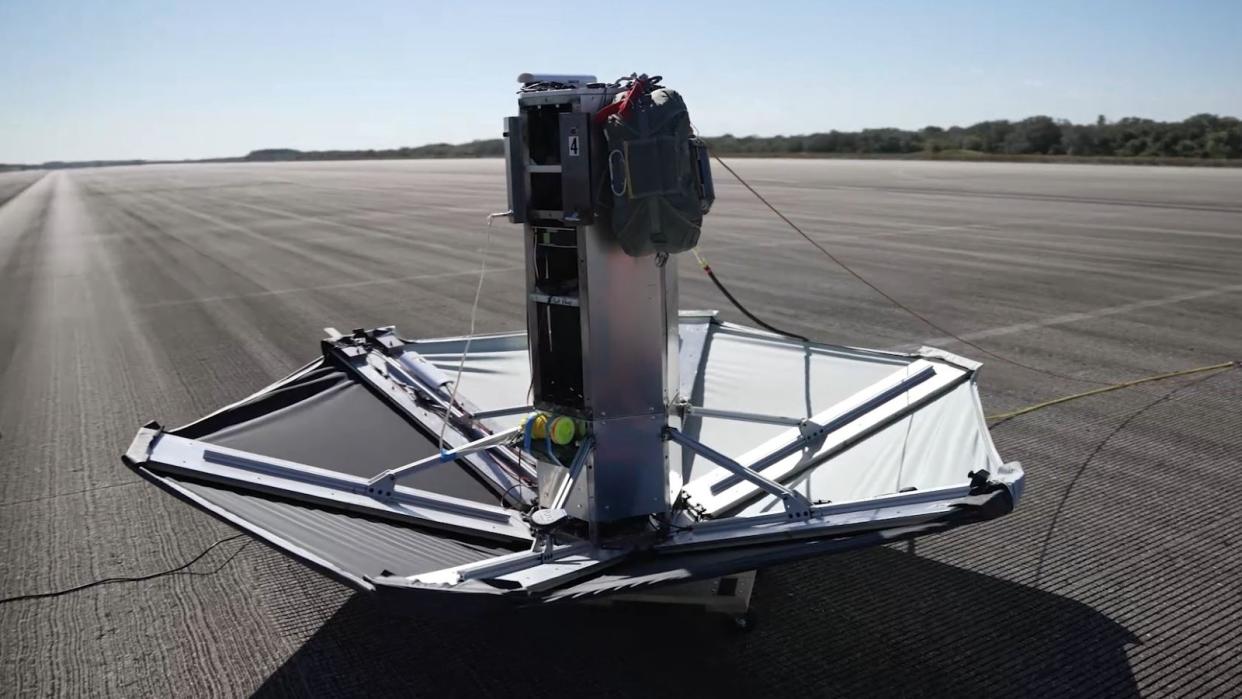
COLORADO SPRINGS, Co — Sierra Space unveiled a radical new concept for on-demand cargo delivery from Earth orbit. The company aims to land critical supplies anywhere on the planet within 90 minutes of when it was requested.
Sierra Space says the concept could enable soldiers on the battlefield or in remote areas to acquire much-needed supplies on quicker timescales, as they'd be far from traditional infrastructure used to transport goods on the ground. The Ghost orbital delivery platform could also aid first responders in disaster-stricken areas and bolster humanitarian efforts.
While several commercial launch providers, such as SpaceX and Rocket Lab, in addition to the U.S. military have been discussing using rockets to send cargo rapidly around the Earth, Sierra Space's Ghost concept could allow payloads to land in areas without dedicated launch or landing facilities. It would be particularly useful for smaller payloads, therefore opening up radical new possibilities for civilian supply chains on top of military demands.
Related: Sierra Space unveils Dream Chaser space plane ahead of 1st flight to ISS (video)

According to a Sierra Space statement announcing the Ghost concept, the system would involve loading pre-determined supplies such as survival kits, an inflatable boat, rations and weaponry onto different "units." There units would then be launched into orbit.
The Ghost platform could then wait up to five years in orbit before any pre-loaded supplies are called down to Earth. Once materials must be delivered, first, a de-orbit motor would slow the satellite down enough for Earth's gravity to begin pulling it towards the planet's surface. The system's thermal shield would meanwhile protect the payload from the upcoming intense heat of reentry.
Once safely within Earth's atmosphere, the thermal shell would be discarded and the system's soft-shell, umbrella-like parafoil would open. A steerable rudder on the parafoil can help guide the Ghost's payload to within 300 feet (100 m) of its targeted landing spot, Sierra Space says.
Sierra Space's new "Axelerator technology" incubator helped the team develop a prototype of the Ghost system in just 90 days, according to the company's statement.
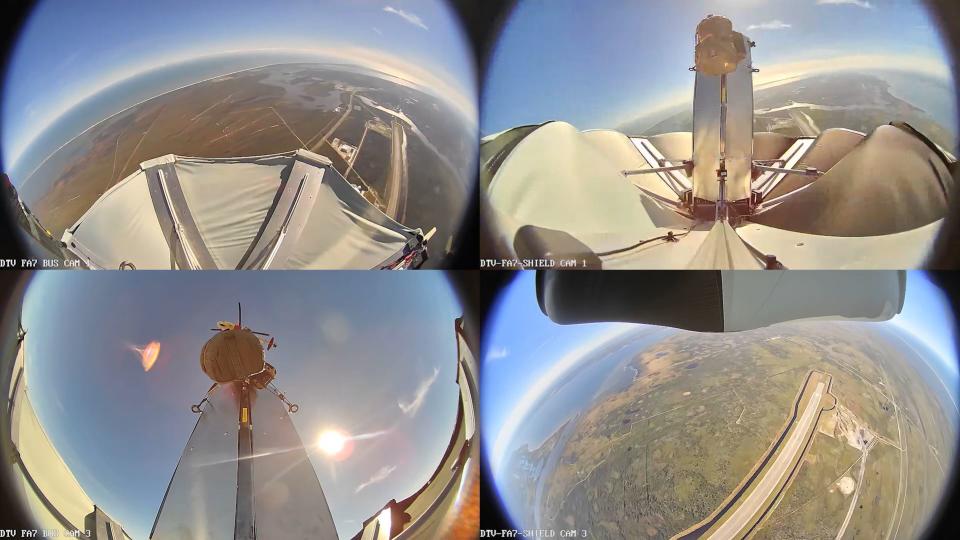
Space.com spoke with Sierra Space's Erik Daehler, Vice President of Orbital Missions & Services, at Space Symposium to learn more about the new Ghost system. Daehler said that while the Ghost system can be scaled to different sizes, between 550 pounds and 1,750 pounds (250 kilograms and 750 kilograms) is the "sweet spot" in terms of cost versus the amount of returnable payload.
Each unit currently costs somewhere in the "tens of millions" of dollars to build, but Daehler said Sierra Space is working to bring that cost down to "single-digit millions."
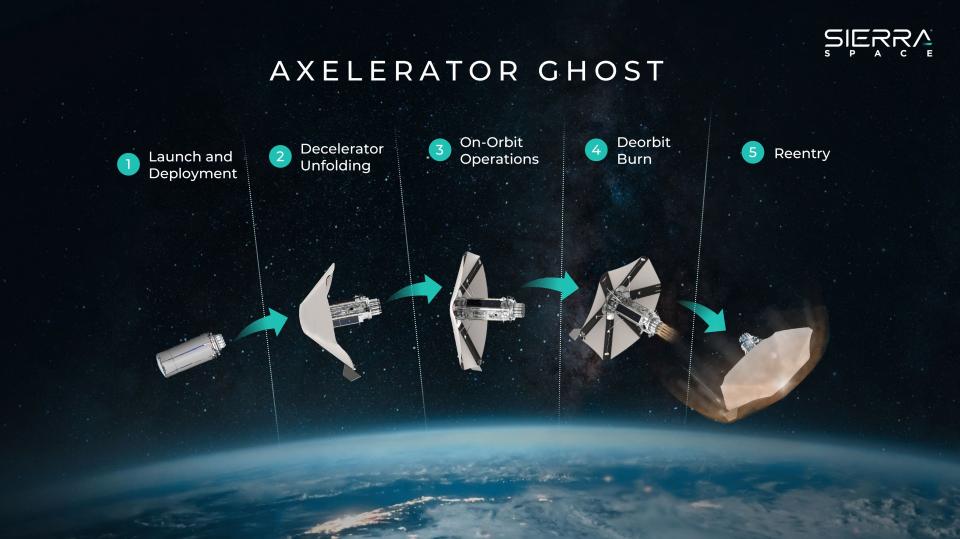
When asked if the Ghost concept could be scaled up until its large enough to return something as massive as a module of the International Space Station (ISS), Daehler said a similar concept could possibly be used, but it would need to use slightly different design principles.
"As you think about cool things like an ISS segment, you can scale things designed in a similar way," Daehler said. "But you might look at a different structural way to build it nicely. So instead of doing a rigid structure like we did, which is super easy to build, you might do something inflatable."
"We think it'd be really cool to bring back something of our heritage like that," he continued. "We originally started designing this because our cargo modules were designed to burn up for our NASA missions to bring back trash. We'd like to eventually reuse them. So, we're looking at that scalability; how do we bring back something much larger?"
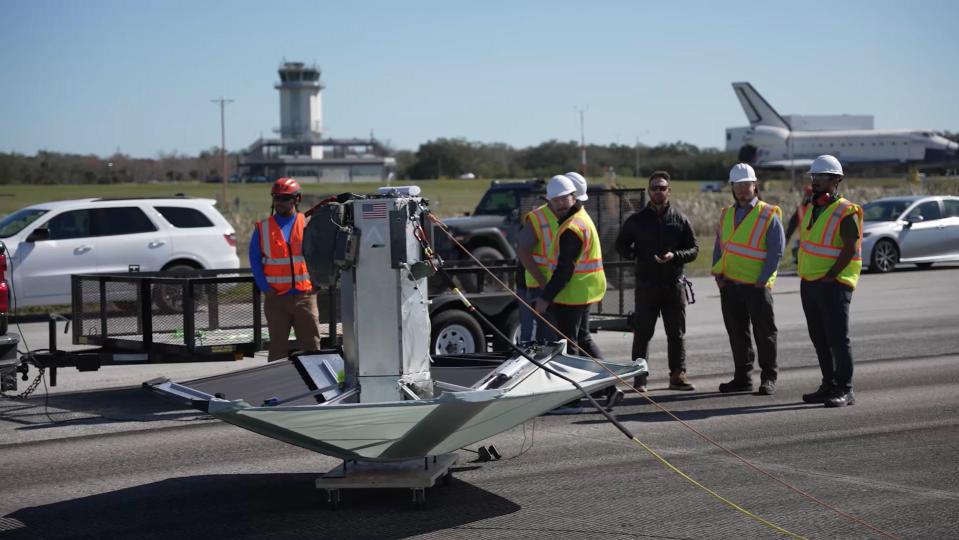
A test article of the Sierra Space Ghost delivery system was on display here at the 39th annual Space Symposium in Colorado Springs. The bottom of the test article was scuffed from having been test-dropped at Space Florida's historic Launch and Landing Facility (LLF) in Florida, where NASA's space shuttles once landed.
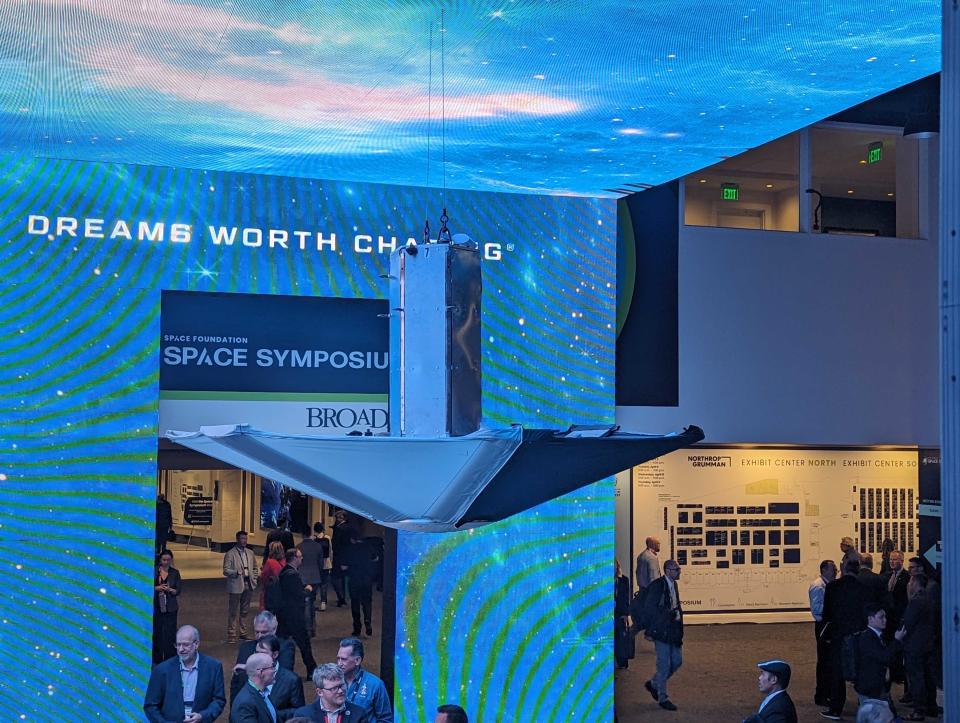
During a testing campaign in February 2024, seven different test articles were dropped from a Sikorsky S-76 helicopter — some with the system's attached parachute, others with only the system's soft-shell decelerator, and still others involving "terminal" drops of the cargo payload alone — from altitudes between 2,000 feet (610 meters) and 4,000 feet (1,220 meters).
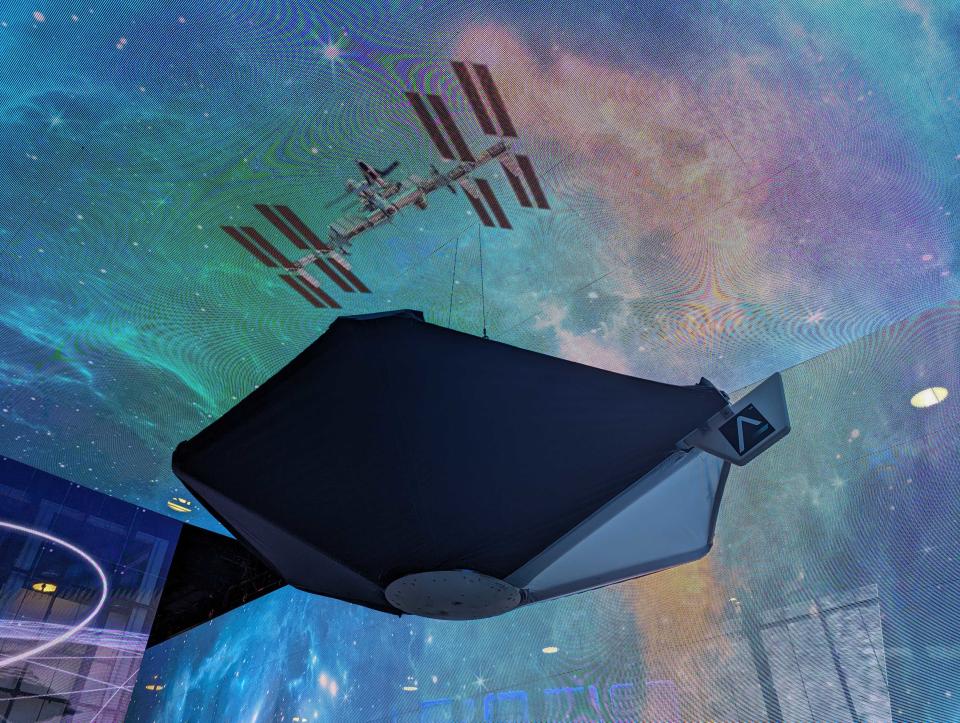
RELATED STORIES:
— US military eyes SpaceX Starship for 'sensitive and potentially dangerous missions': report
— US military, Rocket Lab sign deal to study cargo launches bound for Earth
— US Air Force wants a commercial Rocket Cargo Vanguard to fly stuff anywhere on Earth
Similar resupply concepts have been discussed for years, except those involving point-to-point rocket launches with reusable systems like SpaceX's massive Starship vehicle. Just this year, the U.S. Air Force allocated $4 million in research funding to its Rocket Cargo Vanguard, or "Point-to-Point Delivery (P2PD)" program as it is now known. It's a program that's "focused on utilizing vehicles that traverse from or through space to transport DoD materiel anywhere around the world within tactically responsive timelines," according to Breaking Defense.
However, such a system would likely not be able to land anywhere it wants, as large rockets currently need dedicated landing infrastructure. A much smaller, more tactical concept like the Sierra Space Ghost system could enable pinpoint deliveries to austere, remote or contested areas without the need for landing pads.
Sierra Space has not yet announced a date by which it hopes to have the system in operation, but the company is moving forward with a testing program to further develop the Ghost concept and determine what infrastructure, communications systems and other architecture will be needed to turn it into a reality.

